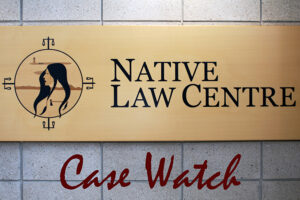With a few exceptions, the Court declined to compel the parties to provide further responses to demands for particulars in West Moberly’s lawsuit challenging the Site C hydro project. Most of their points of contention with respect to the pleadings should be addressed through discovery.
The plaintiffs, West Moberly First Nations and Roland Willson on his own behalf and on behalf of all other members of West Moberly First Nations who are beneficiaries of Treaty 8 [collectively “West Moberly”] seek, among other things, to prohibit the defendant, the British Columbia Hydro and Power Authority, from building a hydroelectric dam and related facilities along the Peace River in northeastern British Columbia, known as the Site C project [“Project”] on the grounds, among others, that the Project infringes their rights under Treaty 8 (West Moberly First Nations v British Columbia, 2018 BCSC 1835).
The parties have been directed to develop a case management plan that would see the trial completed ahead of reservoir inundation, which was then scheduled for fall 2023. In this matter, out of the most recent round of amendments to the pleadings, there are six separate applications under the Supreme Court Civil Rules by which each of the parties seeks further and better particulars of their opponents’ pleadings [“Amended Notice of Civil Claim” or “NOCC”].
The Amended NOCC advances, among other things, new allegations as to the nature of the infringement of Treaty 8 that is alleged; breaches of various duties alleged to be owed by the defendants under the Canadian Charter of Rights and Freedoms and the United Nations Declaration on the Rights of Indigenous Peoples. The Amended NOCC also advances new private law causes of action based on alleged breaches of fiduciary duty, trespass, nuisance, riparian rights, unjust enrichment, waiver of tort and the tort of conspiracy. The subject matter of the claim has been expanded to include all development activities in West Moberly’s traditional territory, including the previous dams built along the Peace River. The amendments have also expanded the scope of the remedial relief sought, so that West Moberly now seeks, in addition to a prohibitive injunction permanently halting the project, a mandatory injunction to restore the land to its former state and damages, including disgorgement of all revenues that the defendants have received from the operation of the dams from their inception.
Although the parties agree on the general principles of law that must inform the Court’s analysis, they disagree on their application to the many contentious demands that are in issue. They join issue in many cases on the question of whether the applicant party is seeking particularisation of the facts that the pleading party intends to prove at trial, as opposed to the evidence that will be called to prove them. The Court refuses to compel the parties to provide further responses to the outstanding demands for particulars, with a few exceptions, due to that what is sought is evidence that is more properly explored through discovery.



